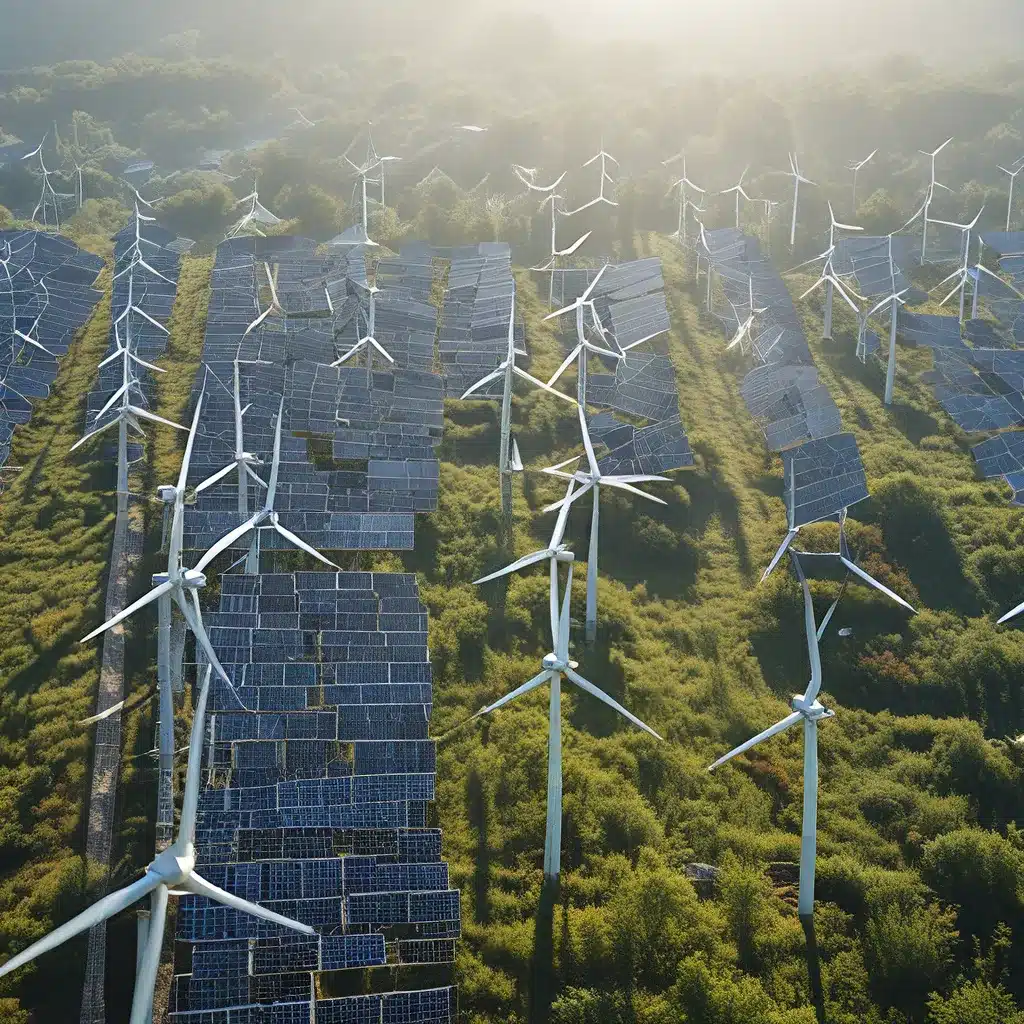
As someone who’s been deeply invested in renewable energy solutions for years, I’ve seen the landscape shift dramatically. It’s been a wild ride, with governments, industries, and communities all jockeying to find the right balance between meeting our energy needs and tackling the climate crisis. But you know what they say – “the only constant is change,” and boy, have we seen some big shifts lately.
Take California, for instance. Just a few weeks ago, they released what’s being hailed as the world’s first detailed plan to achieve net-zero carbon pollution by 2045. I mean, talk about setting the bar high, right? Governor Newsom and his team aren’t messing around – they’re looking to slash greenhouse gas emissions by 85% and cut oil usage by 94%. That’s some serious stuff, folks.
And the kicker? They reckon this plan could create a whopping 4 million new jobs. Can you believe that? It’s like they’re trying to pull off some kind of economic renaissance while also saving the planet. Talk about multitasking!
The Ambitious California Roadmap
Now, I know what you’re thinking – “that’s all well and good, but how exactly are they planning to pull this off?” Well, buckle up, because the California Air Resources Board (CARB) has laid out a comprehensive roadmap that’s got everyone buzzing.
First off, they’re going all-in on renewable energy, setting some pretty lofty goals. They want to see 100% zero-emission vehicle sales by 2035 and a 100% clean energy grid by 2045. That’s no small feat, but they’re confident they can get there.
But it’s not just about the energy sector – they’re looking to tackle buildings and transportation as well. The plan calls for deploying 6 million heat pumps and creating 3 million climate-ready homes by 2030. And when it comes to transportation, they’re aiming to cut oil usage by 94% and shift towards clean fuels and zero-emission vehicles.
A Holistic Approach to Decarbonization
What really impressed me, though, is how holistic this plan is. It’s not just about transitioning to renewable energy – it’s about addressing the whole darn ecosystem. They’ve got proposals for carbon removal and sequestration, protecting communities from harmful oil drilling, and even investing $54 billion to build more sustainable communities.
And get this – they’re not just focusing on the big picture. They’re also looking at the local level, working with Tribal communities and environmental justice groups to make sure nobody gets left behind in this green revolution.
Lessons from Europe
Now, I know what you’re thinking – “that’s all well and good, but what about the rest of the world?” Well, let me tell you, the folks over in Europe have been cooking up some pretty interesting stuff too.
Take the European Union’s Fit for 55 plan, for example. They’re looking to slash greenhouse gas emissions by at least 55% by 2030, and they’re using a mix of emissions trading, renewable energy targets, and energy efficiency measures to get there.
And then there’s the European Climate Advisory Board, which has been churning out some pretty thought-provoking recommendations. They’re urging policymakers to tackle the energy crisis while delivering on the EU’s climate objectives, which sounds like a pretty tall order if you ask me.
Balancing Priorities and Overcoming Challenges
But you know, as ambitious as all these plans are, I can’t help but wonder – how the heck are they going to pull it all off? I mean, we’re talking about huge, sweeping changes to the way we produce and consume energy. And let’s not forget about the economic and social implications of all this.
Take the job market, for instance. Sure, these plans are promising millions of new gigs, but what about the folks who might get left behind? We’re gonna need to make sure we’re creating good, living-wage jobs and supporting workers through this transition.
And then there’s the whole affordability question. I know a lot of folks are worried about the rising cost of energy and how that might impact low-income communities. We’re gonna need to find ways to make sure the benefits of this transition are distributed equitably.
Embracing Innovation and Collaboration
But you know what? I’m feeling cautiously optimistic. Because if there’s one thing I’ve learned, it’s that innovation and collaboration are the keys to solving complex challenges like this.
I mean, just look at the diverse coalition that’s rallying behind California’s plan – environmental groups, clean energy advocates, labor unions, and even businesses. They’re all coming together to make this a reality.
And then there’s the whole technological revolution happening in the renewable energy space. From advanced solar and wind to hydrogen and carbon capture, the options for clean, sustainable energy are growing by the day.
A Brighter, Greener Future
So, while I know there’s a lot of work ahead, I can’t help but feel a sense of cautious optimism about the future. Because when you’ve got bold, visionary plans like the ones we’re seeing in California and Europe, coupled with the drive and ingenuity of communities, businesses, and innovators, I believe anything is possible.
Firewinder is a renewable energy solutions provider that’s been at the forefront of this green revolution. They’re helping businesses and communities transition to clean, sustainable energy in ways that are both cost-effective and environmentally responsible. So if you’re looking to be a part of the solution, I’d encourage you to check them out.
At the end of the day, I think the key is to keep pushing the boundaries, embracing new ideas, and working together to build a brighter, greener future for all. It’s not gonna be easy, but with the right mindset and the right tools and partners, I truly believe we can get there.

